Rural households in Bangladesh are shouldering the country’s climate burden
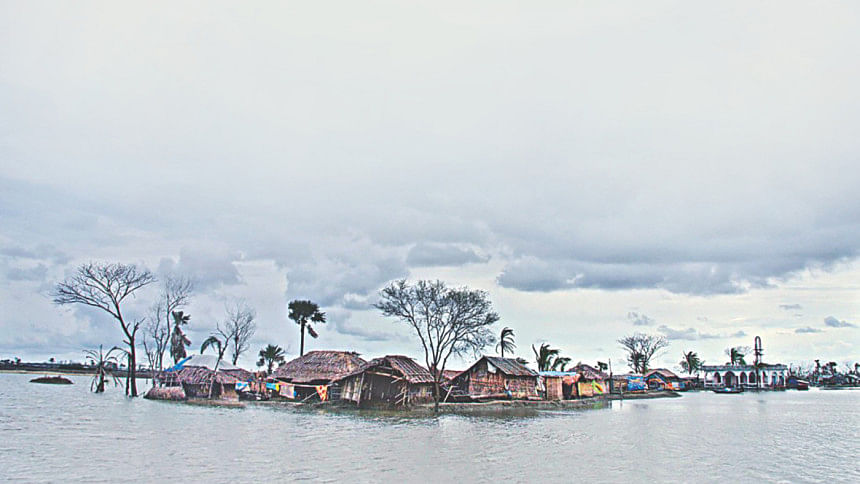
Rural households across Bangladesh are spending a staggering 158 billion taka a year on repairing the damage caused by climate change and on prevention measures, new research ‘Bearing the climate burden: how households in Bangladesh are spending too much’ reveals. This is two times the amount that the Government of Bangladesh spends, and 12 times more than international donors. Families in the most disaster-prone districts, such as in Barisal, are having to spend the most.
Because most people in the country live in rural areas (65%), they are highly dependent on agriculture for their livelihoods. Many are struggling to make ends meet―rural households on average have a per capita income of around Tk 150,000 a year.
Bangladesh is one of the most vulnerable countries to climate change
Bangladesh ranks sixth in the world’s most disaster-prone countries (UNU-EHS, 2015). 53 floods took place between 1990 and 2018. One of the world’s worst-affected countries by tropical storms, Bangladesh also endured 70 storms during the same period (CRED 2019). It tops the list of Asian developing countries at relatively high mortality risk and is second on the list of Asian developing countries at relatively high economic risk from multiple hazards (ADB 2013).
With a per capita income of less than US$2,000, and high dependence on agriculture for livelihoods and employment, Bangladesh is among the most vulnerable economies to the risk of climate change and recurring disaster events. Households often cope to such adversities by cutting back on their basic consumption and selling many important and productive assets. Since households are not just the beneficiaries, rather they are active participants of climate actions, their contributions need to be recognised and public interventions need to be properly aligned to help affected households the most.
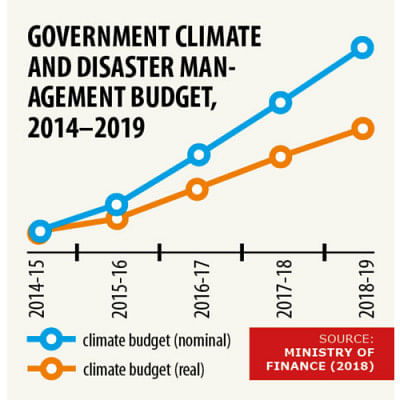
Public climate finance is increasing, but is not yet enough
To fulfil its commitment in combatting climate risks, the Bangladesh government has produced a range of strategies and action plans. For the last five years, the Ministry of Finance has been identifying, maximising and managing sources and fund applications for financing climate-resilient and disaster risk-reducing actions. The Bangladesh Delta Plan 2100, for example, aims to formulate a long-term integrated and holistic investment plan to deal with the expected impacts of climate change and other delta-related challenges.
For 2018–19, the government’s total nominal allocation was 189.5 billion taka, up from 1114.34 billion taka in 2015–16. Although it is encouraging that the government is steadily increasing its contributions over time, rural households, many of whom live in poverty, are having to spend too much on addressing the impacts of climate change.
As a developing economy, Bangladesh has limited ability to publicly finance all the climate and disaster management actions it needs to carry out. Therefore, efficient utilisation of available public fund should be ensured—the government should make public disaster expenditure available in a way that reduces affected households’ financial burden.
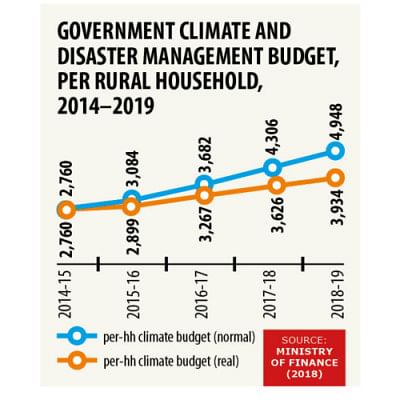
Households are not just “beneficiaries”
Although their contributions are ignored and they are treated as beneficiaries of government’s climate finance programmes, rural Bangladeshi households are actively participating in the fight against climate change and disaster risks through direct and indirect contributions that are higher in volume than the joint contributions from the government and international donors. Using the Bangladesh Integrated Household Survey 2015 data, we found that rural households each spend on average Tk 759 taka on house repairs and/or purchases and Tk 5,849 on other emergency preparedness. In other words, households spend more than Tk 6,600 on climate-related disaster management and emergency actions, whether incurred, ongoing and/or intended. This is equivalent to 158 billion taka by the 24 million rural households in 2015–16. Because actual climate and disaster spending by the government and international bodies in Bangladesh is lower than what is needed, rural households are having to divert money from basic necessities, including food, education and healthcare in order to finance many climate and disaster management actions themselves.
This includes the costs of defensive measures, such as raising their houses above flood levels, precautionary saving for emergencies having to replace destroyed livestock and switching to crops that are more suitable to a wetter climate after disasters and moving to urban areas either temporarily or permanently. Other effects on rural communities includes having to sell agricultural lands, a rise in the number of children and adults seeking non-agricultural work, children dropping out of school and a rise in early marriage for girls.
According to our research, because disaster-affected households do not have enough access to formal sources of finance, they are more likely to borrow large amounts of money from informal sources, such as loan sharks. Given these charge significantly higher interest rates compared to banks and microfinance NGOs, this can mean that households get stuck in a credit trap while trying to overcome the risks of climate-induced disasters.
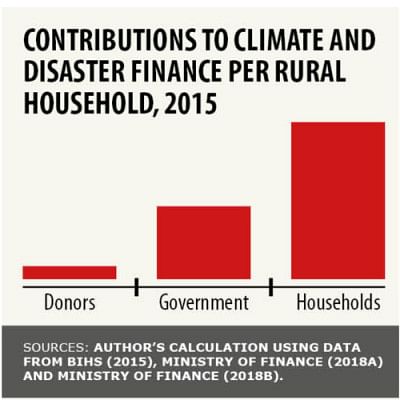
Women spend a larger amount of their income on climate and disaster impacts
Although rural female-headed households spend similar amounts on addressing climate and disaster impacts as male-headed rural households, because their average income is much lower, as a share proportionately they actually spend three times more. This means that climate change and climate-induced disasters have a bigger effect on female-headed rural households, so it is vital they are involved in developing solutions that work for them.
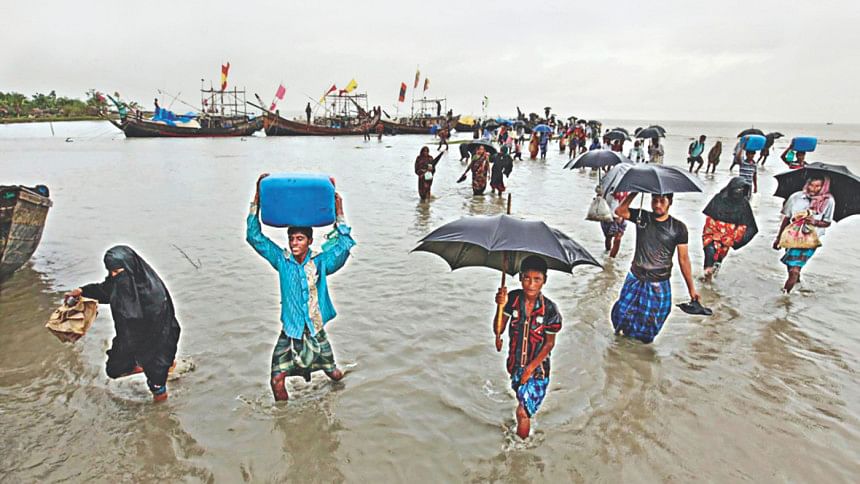
What needs to change
Government and international agencies need to commit more money that is designated for climate adaptation and disaster risk reduction money to the local level to ensure they meet poor households’ priorities in how to address climate change. This includes preparing for disasters and rebuilding houses—for example, by raising household compounds with earthen foundations.
As female-headed households give climate and disaster management higher priority than male headed households, government support must specifically involve women in designing programmes that reflect their priorities.
It is also important the government gathers more data on how much households are spending on climate and disasters. Statistical offices, such as the Bangladesh Bureau of Statistics, need to include more questions on the subject in their annual and periodical household expenditure surveys.
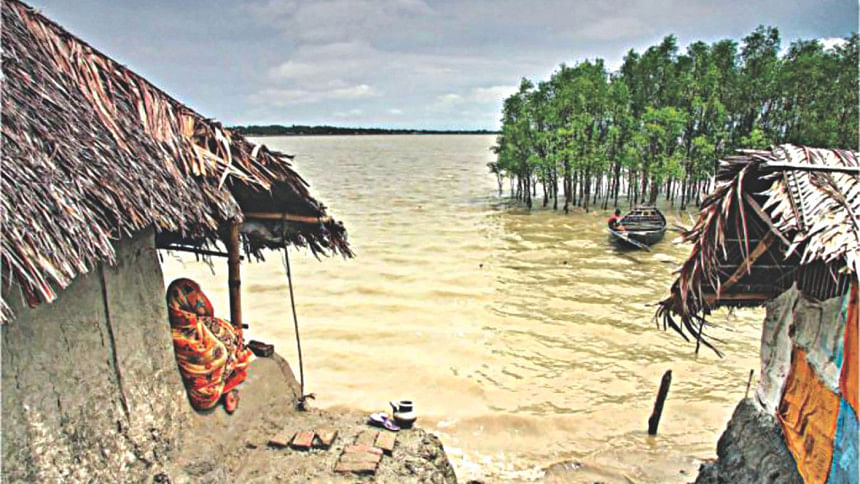
Shaikh Eskander, Senior Lecturer of Economics at Kingston University London and a visiting Research Fellow at Grantham Research Institute at London School of Economics and Paul Steele is the Chief Economist at the International Institute of Environment and Development

 For all latest news, follow The Daily Star's Google News channel.
For all latest news, follow The Daily Star's Google News channel. 



Comments